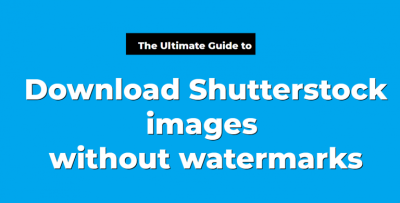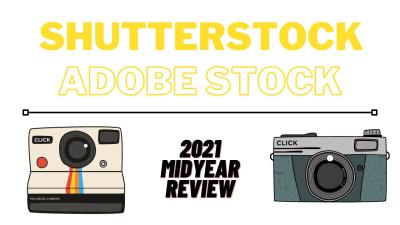If you’re someone who loves stunning visuals but doesn’t want to break the bank, you’re in luck! Shutterstock is a treasure trove of high-quality images, videos, and music, but it can be pricey if you’re not careful. The good news is, there are ways to access some of Shutterstock’s content without a subscription. Whether you’re working on a personal project, a small business, or just exploring options, knowing where and how to find free resources can be a game-changer. Let’s dive into the world of free
Understanding Shutterstock’s Licensing and Pricing
Before you start hunting for free images on Shutterstock, it’s essential to understand how their licensing and pricing work. Shutterstock offers various licensing options, mainly Standard and Enhanced licenses, which dictate how you can use their content and what you’re allowed to do with it. Typically, these licenses are tied to a cost, especially if you’re purchasing images individually or subscribing to a plan. However,
Here’s a quick overview of Shutterstock‘s licensing types:
- Standard License: Suitable for most uses like websites, blogs, and social media. It allows for a certain number of copies or views but restricts resale or use in products for resale.
- Enhanced License: Offers more rights, such as unlimited print runs or use in merchandise.
As for pricing, Shutterstock operates on a pay-per-image basis, subscription plans, or on-demand packs. While these options are great for regular users, they can be costly for casual needs. That’s where understanding licensing becomes crucial—if you’re only after a few images, you might want to explore free options or look for images that fall under Creative Commons licenses or Shutterstock’s free resource offerings.
Shutterstock also provides a selection of free images, videos, and vectors each week, which are available for download without a subscription. These free resources are a fantastic way to access high-quality content legally and without cost, as long as you adhere to the licensing terms provided with each file. Always double-check the license attached to any free resource to ensure you’re using it appropriately and legally.
Legal Ways to Obtain Free Shutterstock Images
So, you’re wondering how to get gorgeous Shutterstock images without breaking any rules or spending a dime? The good news is, there are legitimate ways to access high-quality images without a subscription, and it’s totally legal! Let’s explore some options that can help you find stunning visuals without any legal worries.
First off, Shutterstock offers a range of free images that you can use legally. They regularly update their free image collection, so it’s worth checking back often. These images are available for personal or commercial use, depending on the license, and they’re a fantastic resource for bloggers, small business owners, or anyone looking to spice up their projects.
Here’s how you can access these free images:
- Visit Shutterstock’s Free Image Page: Head over to their official free images section, where you’ll find a curated selection of photos, vectors, and illustrations available for download at no cost.
- Register for a Free Account: Creating an account is simple and free. Once registered, you can download a set number of free images each day or month, depending on their current promotion.
- Use Free Images in the Shutterstock Editor: Shutterstock also offers an online editor where you can customize images. Some free images are available for use directly within this tool, making it easy to tailor visuals to your needs.
Another great way is to look for images licensed under Creative Commons (CC). Websites like Unsplash, Pexels, and Pixabay host thousands of high-resolution photos that are free to use without attribution (though giving credit is always appreciated!). These sites often have images that look just as professional as Shutterstock’s paid content, and their licenses make sure you stay on the right side of the law.
Remember, always double-check the licensing terms before using any image. Even free images can have restrictions, such as prohibiting commercial use or requiring attribution. When in doubt, give credit to the creator or opt for images explicitly labeled as free for commercial use.
Using Shutterstock’s Free Trial Offers
If you’re eager to access a wider selection of Shutterstock images without committing to a subscription, their free trial offers are a fantastic option. Shutterstock often provides trial periods that allow you to download a set number of images or access their library for a limited time—completely free. It’s a great way to test out their platform and gather the visuals you need for a project.
Here’s what you need to know about Shutterstock’s free trials:
- Sign Up for the Trial: Head over to Shutterstock’s website and look for their free trial offer. You’ll typically need to create an account and provide some basic information.
- Select a Plan: Many trials are based on a pay-as-you-go model, offering a certain number of downloads (like 10 images) for free during the trial period. Make sure to read the terms so you know exactly what’s included.
- Download Your Images: Once signed up, you can browse Shutterstock’s extensive library and download images within the trial limit. These images are high-quality and licensed for various uses, making them perfect for professional projects.
- Cancel Before the Trial Ends: To avoid charges, be sure to cancel your subscription before the trial period expires if you don’t wish to continue. You won’t be billed if you cancel on time.
Keep in mind, the availability of free trials can vary, and Shutterstock sometimes offers special promotions or seasonal deals. So, it’s worth checking their website regularly or signing up for their newsletter to stay in the loop.
Using these free trials wisely can give you access to a treasure trove of premium images without any upfront costs. Just remember to adhere to their usage rights, and you’ll be able to enhance your projects legally and effortlessly.
Exploring Free Image Sources Similar to Shutterstock
When you’re on the hunt for high-quality images but want to avoid the costs associated with Shutterstock, the good news is that there are plenty of excellent free alternatives out there. These sites offer a wide range of images that can fit just about any project, whether it’s for a blog post, presentation, or social media content. Let’s dive into some of the most popular and reliable sources you can explore.
Unsplash is a favorite among creators for its vast library of stunning, high-resolution photos. The best part? All images are free to use, even commercially, with no attribution required (although giving credit is appreciated).
Pexels offers a huge collection of free stock photos and videos. Their user-friendly interface makes it easy to search and find exactly what you need, whether it’s nature, technology, people, or abstract images.
Pixabay is another fantastic platform that provides not only photos but also illustrations, vectors, and videos. Their license allows for free use in almost any project, making it a versatile resource.
FreeImages features a wide variety of categories and a sizable collection of free images. While some images might require attribution, many do not, so it’s worth checking the licensing details.
Flickr’s Creative Commons section offers a treasure trove of images shared by photographers around the world. To ensure you’re using images legally, always filter by the appropriate Creative Commons license and give credit when required.
These sources are excellent starting points when you need free images that can stand in for Shutterstock’s premium offerings. Keep in mind, while these sites offer free images, it’s always good practice to double-check licensing details before downloading and using them, especially for commercial purposes.
Tips for Finding High-Quality Free Images Legally
Finding beautiful, high-quality images is one thing, but making sure you’re using them legally is just as important. Here are some practical tips to help you navigate the world of free images safely and ethically:
- Always check the license: Before downloading an image, review its license type. Look for images labeled as “public domain,” or those under Creative Commons licenses that permit commercial use. Sites like Unsplash and Pexels typically offer images that are free for both personal and commercial projects without attribution.
- Respect attribution requirements: Some free images require you to credit the creator. Even if it’s not legally required, giving credit is a kind gesture and supports photographers and creators.
- Avoid copyrighted images: Never use images from unauthorized sources or those that are clearly copyrighted without permission. This can lead to legal issues and penalties.
- Use reputable sources: Stick to well-known free image platforms like Unsplash, Pexels, Pixabay, or Flickr’s Creative Commons section. These sites curate their collections and clarify licensing terms.
- Look out for image quality: High-quality images look professional and are more engaging. Examine the resolution and clarity before using an image to ensure it meets your standards.
- Keep track of licenses and sources: Save links or screenshots of the images you download along with their licensing info. This will help you stay organized and compliant if questions arise later.
By following these tips, you can confidently find and use free images that elevate your projects without risking legal trouble. Remember, respecting creators’ work not only keeps you out of hot water but also supports the ongoing creation of amazing free content for everyone to enjoy.
Conclusion and Best Practices for Accessing Shutterstock Content
While accessing Shutterstock content without a subscription can be challenging, understanding the available options and following best practices can help you make the most of free resources ethically and efficiently. Always prioritize legal methods to respect copyright laws and support creators. Utilizing free trial offers, exploring public domain images, and leveraging platforms that offer free or royalty-free images are effective strategies. Remember that Shutterstock provides high-quality images, and using them responsibly ensures you maintain professionalism in your projects.
To maximize your success, consider the following best practices:
- Use Free Trial Periods: Sign up for Shutterstock’s free trial to access a limited number of images legally.
- Explore Royalty-Free and Public Domain Resources: Websites like Unsplash, Pexels, and Pixabay offer free images that are often comparable in quality.
- Respect Licensing Agreements: Always verify the license type of any image you download to ensure proper usage rights.
- Utilize Creative Commons Licenses: Search for images licensed for free commercial use with attribution if required.
- Avoid Unauthorized Downloading: Steer clear of illegal download sites or tools that violate Shutterstock’s terms of service.
In conclusion, ethical and legal access to Shutterstock content involves leveraging free trials, exploring alternative free image sources, and respecting licensing conditions. By following these best practices, you can effectively enhance your projects without infringing on copyrights or risking legal issues.


